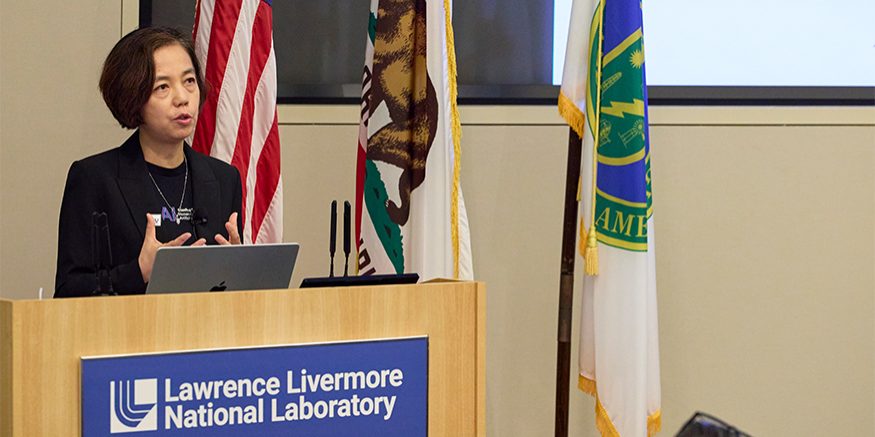In a talk at Lawrence Livermore National Laboratory (LLNL) on May 30, Stanford University professor and AI visionary Fei-Fei Li traced a sweeping arc in visual intelligence and AI — a narrative she hopes ultimately leads to a more human-centered future.
Part of the Director’s Distinguished Lecturer Series, the Stanford computer scientist went beyond technical milestones from her two-decade career into her philosophy of intelligence, ranging from the evolution of vision in the Cambrian Age to modern-day “robot cousins” that can see and assist humans in everyday menial tasks.
“Visual intelligence is truly one of the most important corners of intelligence — not only is it important for animals and for humans as individuals, it’s also important for civilization,” Li told a packed auditorium in the Livermore Computing Center. “This brings the question of ‘how do we build visually intelligent machines?’ This has been my life’s passion.”


